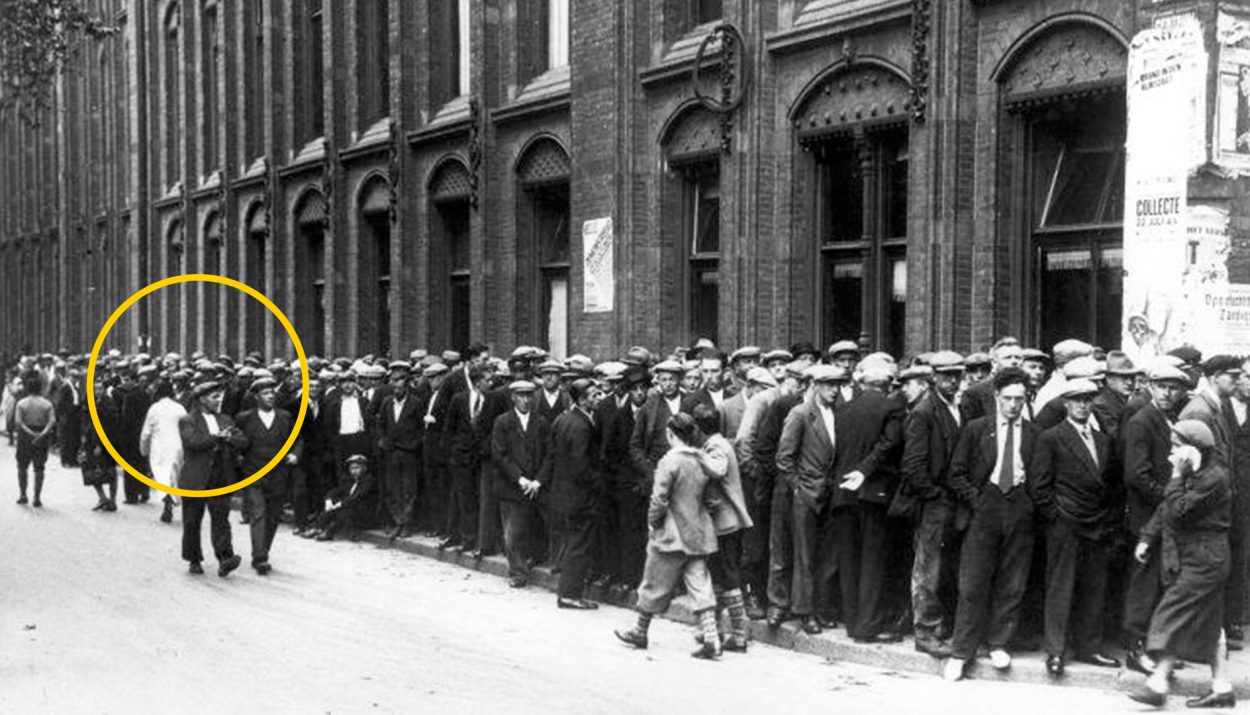When the stock market crashed in 1929, the United States was plunged into the Great Depression, which lasted for most of the 1930s. During this time of economic strife, unemployment was at an all-time high. So was inflation.
The nation had just enjoyed a decade of prosperity, which made the lifestyle changes of the Great Depression sting that much more. Times were tough, that’s for certain, yet your great-grandparents survived. Perhaps they used some of these 14 tips and tricks to get them through the Great Depression.
1. Dressing Your Family in Flour Sacks
Wives and mothers learned to be resourceful during the Great Depression. That meant making good use of the items one had on hand. Fabric for clothing was too costly for many families to afford, however the flour they bought came in sacks made of durable cotton. A frugal housewife could transform the flour sacks into serviceable dresses, shirts, and undergarments.
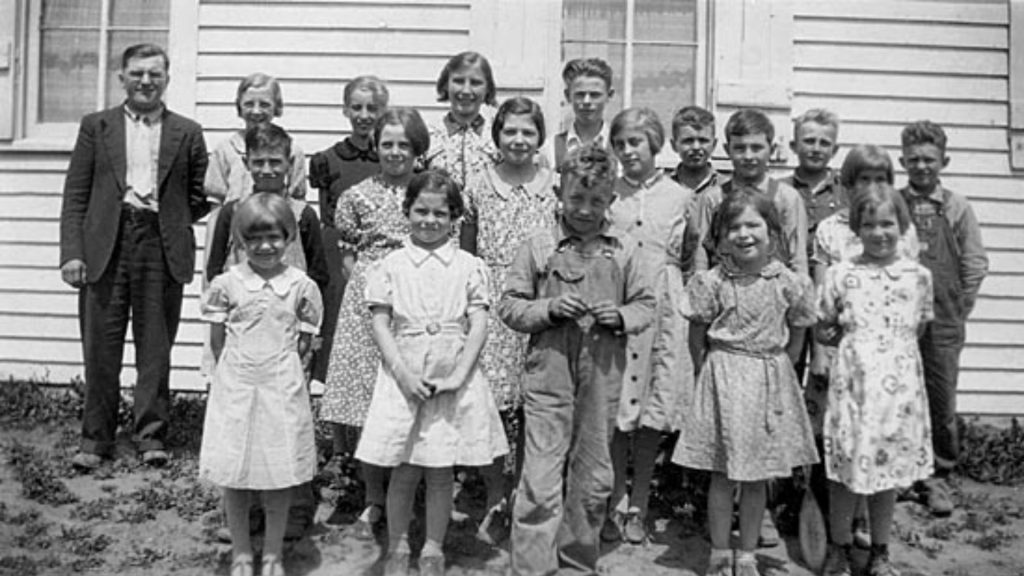
When flour manufacturers learned that people were sewing clothing out of their flour sacks, they decided to help the cause. They produced flour sacks with appealing patterns and designs. Depression-era families might be poor, but they dressed well.
2. Listening to the Radio
Listening to the radio provided a much-needed escape from the harsh realities of life for people living through the Depression. The radios themselves were relatively affordable. Once it was purchased, the family had access to free entertainment in the form of music shows, comedies, serial dramas, and children’s programming.
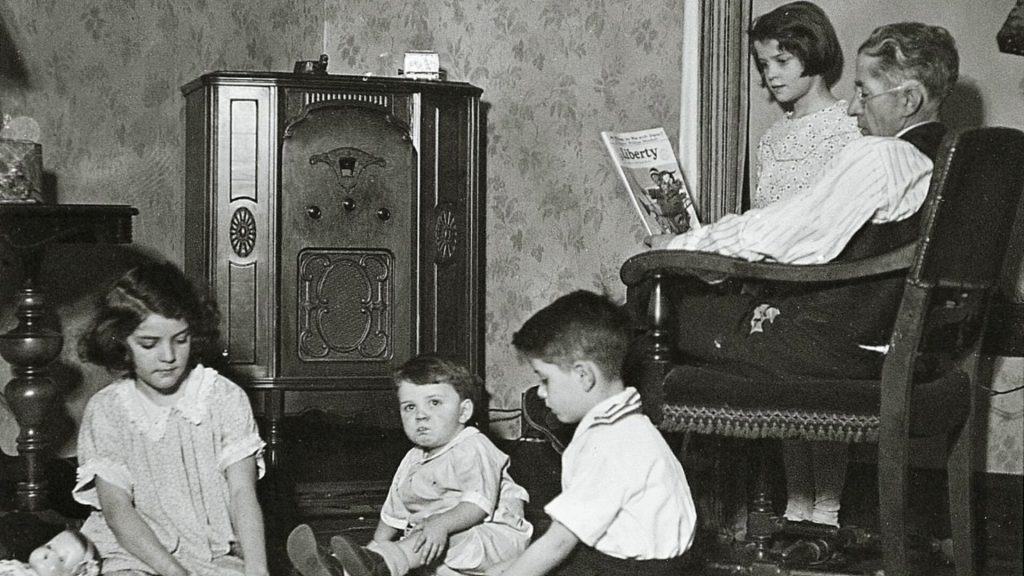
Radio broadcasts also helped keep Americans informed about news. It was even used by the government to share information about aid opportunities, relief programs, and job prospects. For many families trying to survive the Great Depression, their radio was their lifeline and source of joy.
3. Potluck Dinners
In time of need, folks in the 1930s decided to share their resources … and do a little socializing at the same time. For this reason, potluck dinners were all the rage during the Great Depression. By focusing on preparing just one dish – using whatever ingredients the family happened to have in abundance – the community could all enjoy a variety of hearty food.
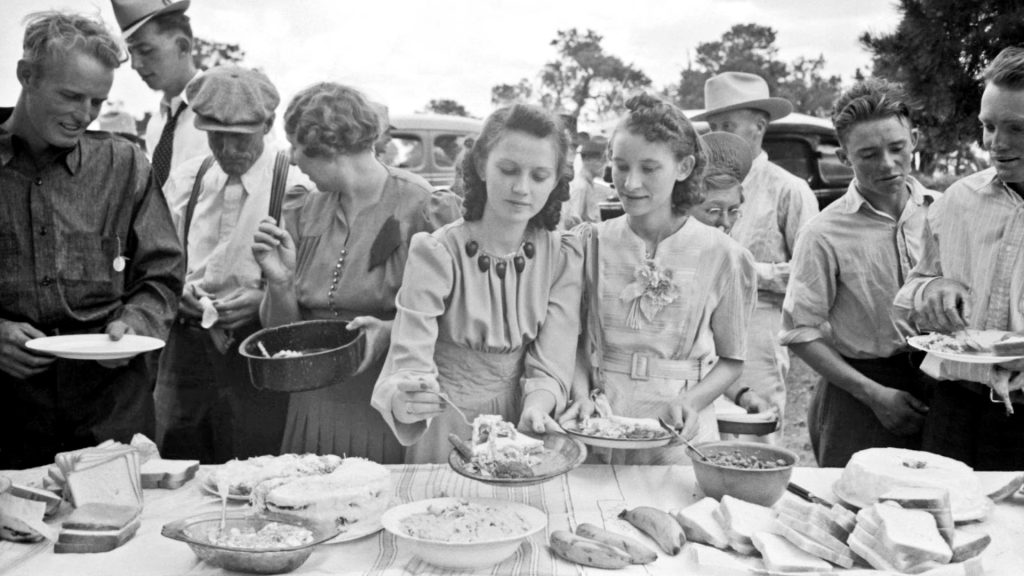
Whether a community-sponsored or church-sponsored event or a casual gathering for friends and neighbors, potluck dinners brought people together and gave them an opportunity to strengthen community bonds … while enjoying a shared meal.
4. Foraging
When food was scarce and there was little money for groceries, many people took to the forests and fields to gather wild edibles. Foraging is a trendy, hipster hobby these days, but during the Great Depression, it could be a matter of life or death. Or, less dramatically, a way to put food on the table and fill some bellies.
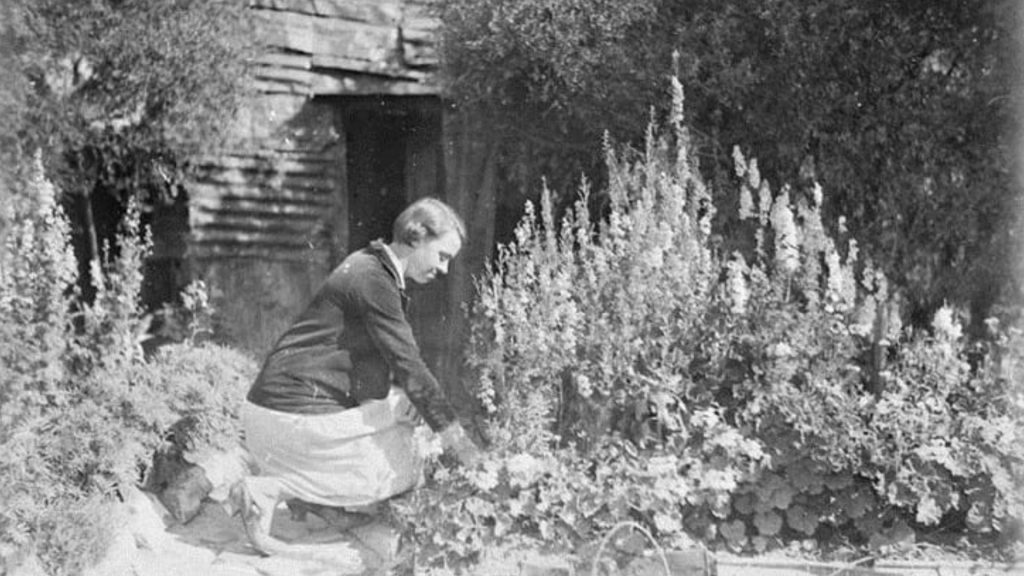
During the springtime, the woods and meadows provide greens, sprouts, and mushrooms. In the summer months, wild fruits and berries could be gathered to be eaten fresh or preserved for the winter. Even into the autumn, wild apples, plums, and grapes could be collected, as well as tubers and roots.
5. Riding the Rails
The Great Depression was especially devastating for young men who were unable to find work and therefore, could not start families of their own. This led many men to look for other opportunities by riding the rails. Homeless and jobless, they hitched rides on passing freight trains in search of employment in different parts of the country.
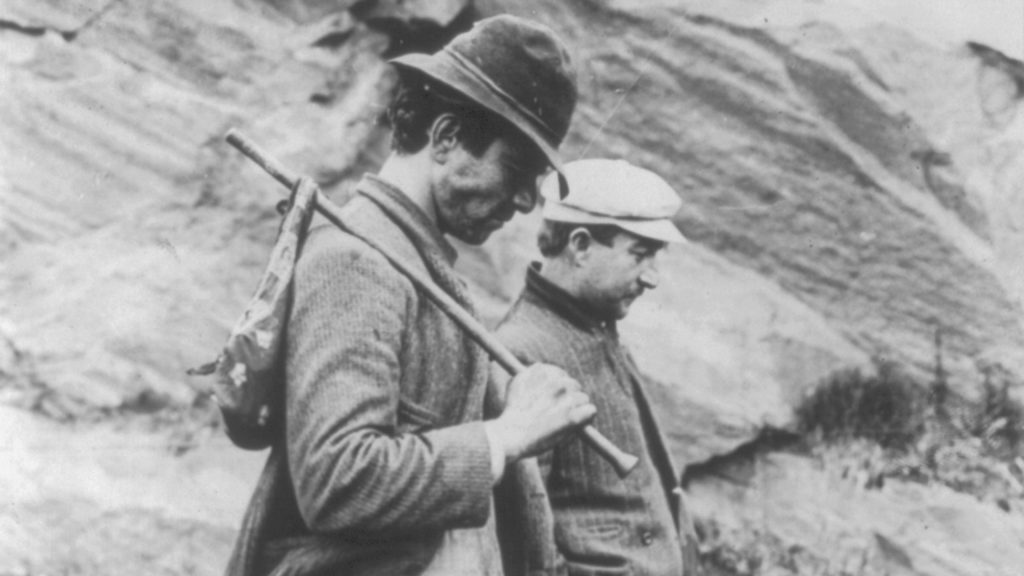
Riding the rails was a free, albeit illegal, way to travel. So many young men took to riding the rails that the hobo culture emerged. By adopting the nomadic lifestyle of the hobo, these down-on-their-luck people had hope that they would find relief from their poverty … maybe at the next stop.
6. Stash Your Cash
The stock market crash of 1929 caused a run on the nation’s banks as frantic folks tried desperately to withdraw their hard-earned cash before the bank went belly up. Many of them were too late. They lost all their money in the bank failures. Although the government put systems in place to insure deposits in the future, the damage had been done.
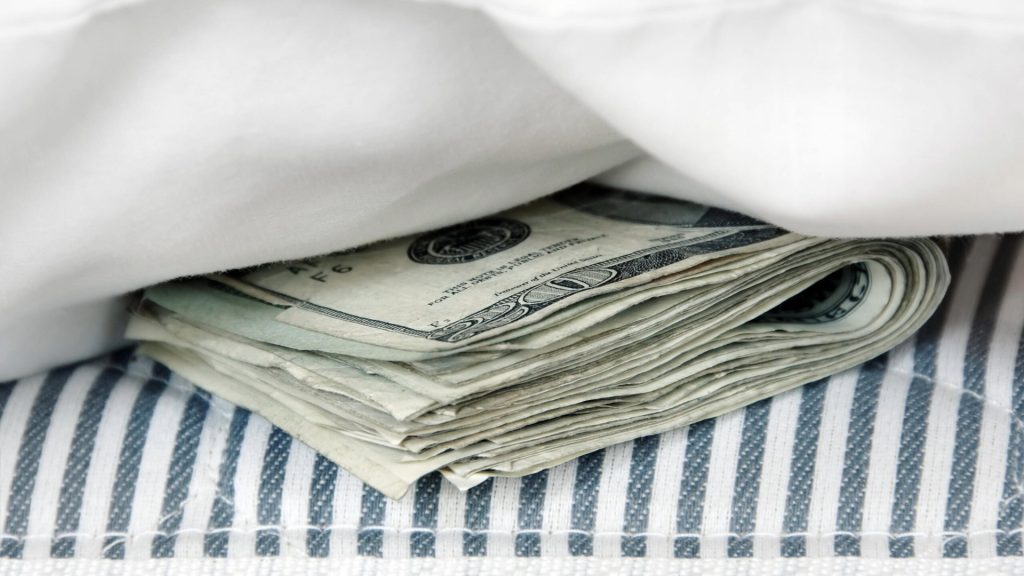
Most Americans lost trust in the banking system and refused to hand over their money to the banks ever again. How did they survive the Great Depression? By hoarding their cash and keeping it close. A coffee tin, a mattress, a hole in the backyard … all of these were safer options than banks.
7. Drinking Homemade Hooch
Drinking, we know, never makes your troubles completely disappear, but it served as a coping mechanism for many people struggling to survive the Great Depression. Alcohol could be made cheaply and easily using corn mash and a backyard still.
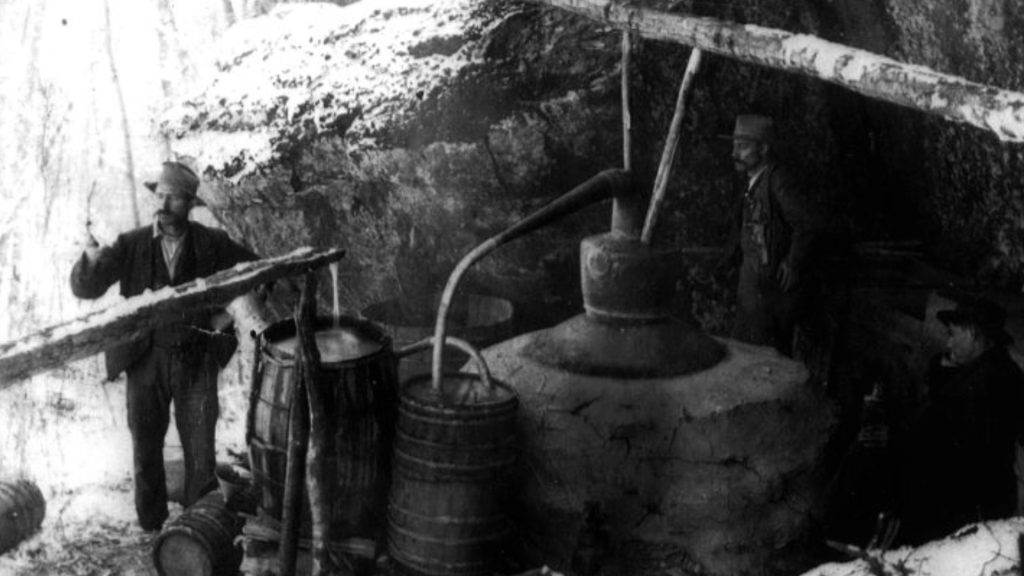
Even after Prohibition was repealed on December 5, 1933, many people continued to make their own alcohol. It may not have been legal, but it was a lot cheaper…and it got the job done.
8. Playing Board Games
A by-product of the Great Depression was board games. These games were inexpensive to purchase and provided hours of fun for families with little other entertainment options. Surprisingly, one of the most popular games of the era was Monopoly. Apparently people loved to experience financial prosperity, even if it involved fake money.
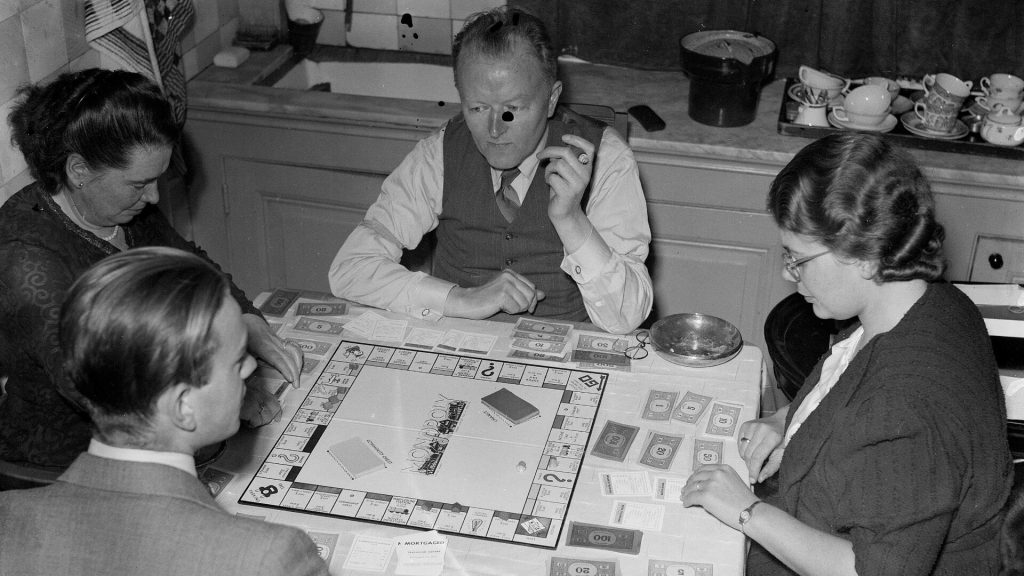
Board game makers did well during the 1930s and introduced games, like Monopoly and Scrabble, that are still considered classics today. Of course, the old stand-bys … Checkers and Chess … were equally popular.
9. Brother, Can You Spare a Dime?
Panhandling was prevalent during the Great Depression. So much so, in fact, that a song about begging and mooching, “Brother, Can You Spare a Dime?,” was a hit. Desperate times call for desperate measures which lead many people, particularly those living in the nation’s cities, to seek hand-outs from kind souls and generous passersby.
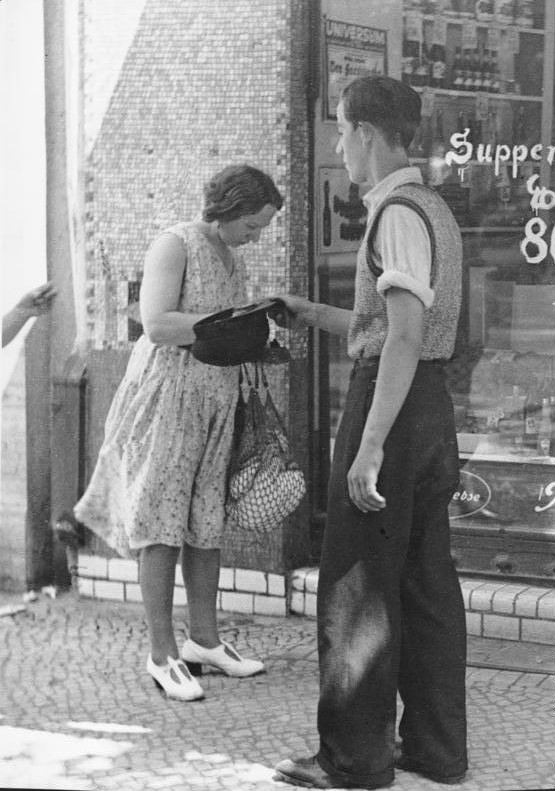
As the Great Depression wore on, there were government assistance programs to help the destitute, but there was a common attitude among Americans that accepting help from the government was only for the weak and lazy. Many people would rather beg for coins from strangers than take money from Uncle Sam.
10. The New Deal
President Franklin D. Roosevelt launched a series of programs aimed at providing economic relief and putting Americans back to work. Called the New Deal, Roosevelt’s plan included the Civilian Conservation Corps (CCC), which provided employment for young men in conservation projects, mostly in state and national parks.
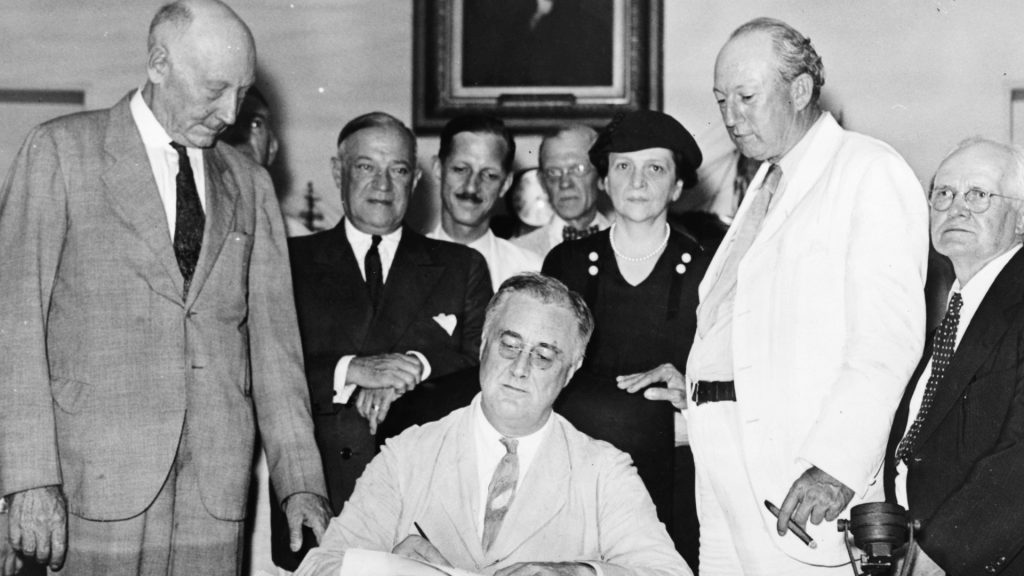
In addition, the New Deal’s Works Progress Administration sought to create employment opportunities in other public works projects. Social Security was established under the New Deal to give the elderly, the disabled, and the unemployed a financial safety net. The New Deal worked because people were not simply accepting charity from the government; they were working for their money, thus removing the pride factor.
11. Poor Man’s Divorce
The stresses of financial instability broke apart many marriages during the 1930s. In lieu of an actual divorce, which was an expense few people could afford during the Great Depression, married couples resorted to informal separations. It was, in fact, such a widespread phenomenon that it was given a catchy nickname … poor man’s divorce.

This form of separation was often mutual. But sometimes it wasn’t. A heartbreaking side effect of the Great Depression was family abandonment. Unable to find work to provide for his family, a husband and father simply left, never to be heard from again.
12. Escape to the Movies
Going to the movies was one of the favorite forms of escapism for folks grappling with the realities of the Great Depression. For just a few cents a ticket, people could spend a few hours away from their troubles while immersing themselves in the glamor of Hollywood productions. Shirley Temple movies were particularly well-received.

The curly-haired youngster with the bubbly personality and exuberant optimism won the hearts of many Americans who were dealing with their own difficulties. Hollywood responded to this need for escapism by producing some of the best films to ever grace the silver screen.
13. Kraft Macaroni and Cheese
Did you know that Kraft Macaroni and Cheese helped to feed families during the Great Depression? It’s true! This first real convenience food item was introduced in the late 1930s and marketed as an affordable and easy meal that would feed the whole family. Yes, one box was supposed to feed a family of four.

Kraft Mac and Cheese became a staple for families trying to stretch their food dollars long before it became a staple of college dorm life. The success of this product inspired Kraft and other food manufacturers to bring out more cheap and easy items…like SpaghettiOs and Spam.
14. Working Women
Prior to the Great Depression, few women worked outside the home. But with rampant unemployment affecting families, women had to step up to supplement the household income, even if it wounded her husband’s pride. Manufacturing companies, in fact, preferred to hire women over men … they could get away with paying them a lot less!
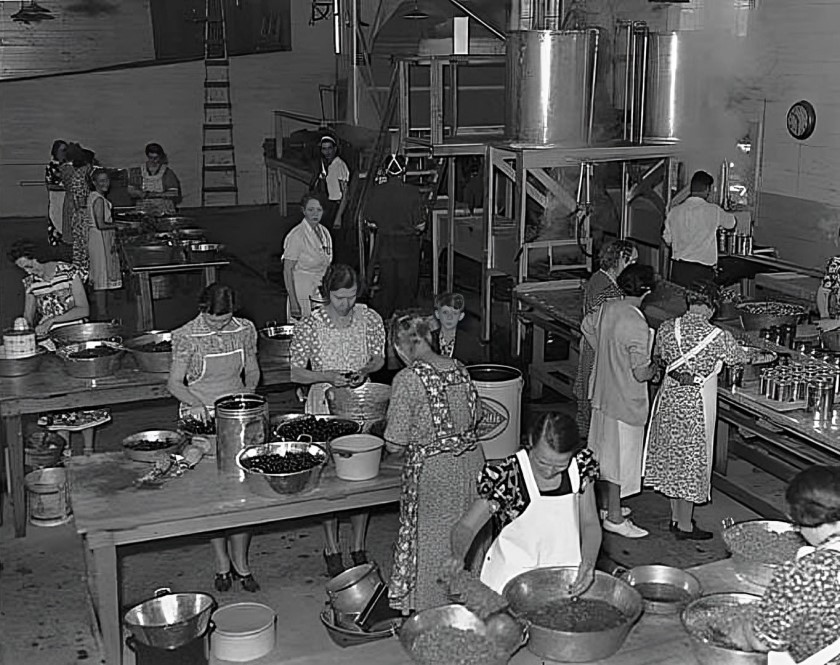
Just a decade prior, women in America were granted the right to vote, so seeing women employed outside the home was just another step toward gender equality … even if equal pay was still a long way off.

